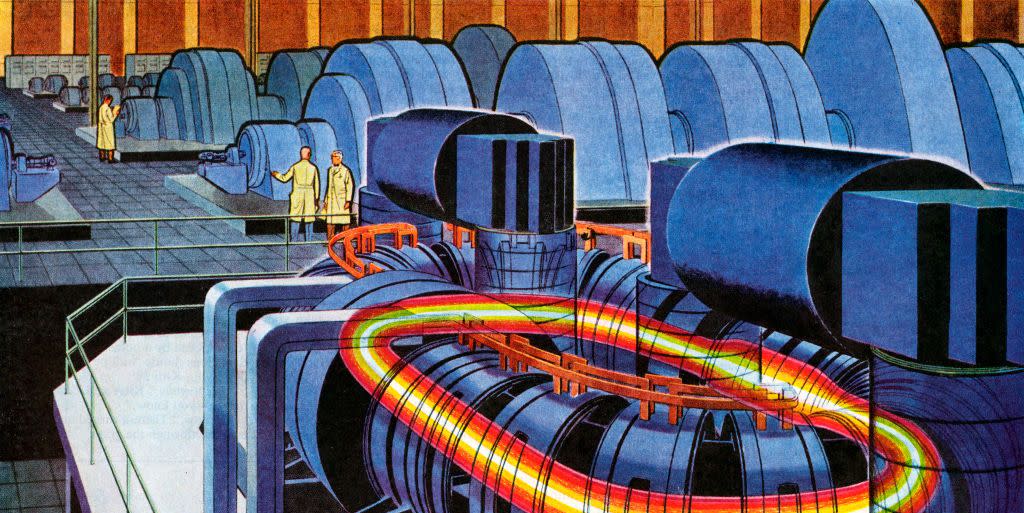This Powder—Not Gas—Could Rescue Nuclear Fusion

A trickle of boron powder could turn nuclear fusion dreams into reality.
Tokamak reactors are one of the major frontiers in fusion research, but they're also volatile—and potentially dangerous.
Inert boron powder would replace explosive boron-hydrogen gas.
Researchers at Princeton University have found a way to make a tokamak nuclear fusion reactor safer using insulating boron powder. The new research appears in the IAEA journal Nuclear Fusion and comes from Princeton’s U.S. Department of Energy-funded Princeton Plasma Physics Laboratory (PPPL).
A tokamak, like the huge one that will reach 200 million Celsius in China next year, is a nuclear fusion plasma reactor where extremely hot, charged plasma spins and generates virtually limitless energy. The Princeton research examines the way boron powder can prevent one of the fundamental flaws in existing plasma reactor technology.
Plasma is volatile, and particles that escape the sun-hot plasma stream react with the materials that enclose the tokamak. This stops the plasma fusion reaction because the temperature falls out of the effective zone, but more importantly in Maslow’s hierarchy, it’s also wildly dangerous for the reactor itself and everything around it.
The PPPL team found that while boriding—literally, coating with boron—helps to keep plasma in the right reaction state, the existing method is too dangerous. Nuclear scientists use diborane gas, which is made of boron and explosively flammable hydrogen. To use it, these scientists must stop their tokamaks completely, introduce the gas, then leave again because of the flammability. At PPPL, they thought there must be a better way.
To make the process just as effective, but far safer, the PPPL team tested the use of both pure boron and boron nitride powders. The powders are inert, meaning they don’t react with anything or catch fire. The researchers applied the powders by injecting them into the tokamak while it was running, which is another method improvement over diborane gas. Once inside, the powder worked the same way the gas did: It kept the temperature in the high performance zone, which keeps the plasma more stable and prevents scraping the sides of the tokamak’s chamber.
The use of powder can also help scientists develop simpler, safer forms of plasma reactions called low-density plasmas. These plasmas can be controlled more safely and could be a more immediately practical form of reactor for use in the energy sector. Heck, when plasma reaction is considered pretty dangerous and experimental, having any options at all is a way to bring more researchers into the fray and open the field up to new ideas.
And since scientists can just dribble in more powder as they need it, the PPPL team believes its research has big ramifications for use of classic fusion reactors, too, where continuous uptime is vital to any version that could be used in the long term. Lead scientist Dr. Robert Lunsford said in a Princeton press release, “This is one way to get to a steady-state fusion machine.” In other words, this is a step toward the energy holy grail.
The Princeton Plasma Physics Laboratory is a government-sponsored national laboratory, in the same category as Argonne, Fermi, and Los Alamos. The U.S. Department of Energy funds and boosts these labs not as the farm team for professional science, but as the major place where innovation takes place in the U.S. If a practical fusion reactor came from one of these labs, that would be proof of concept indeed.
You Might Also Like

